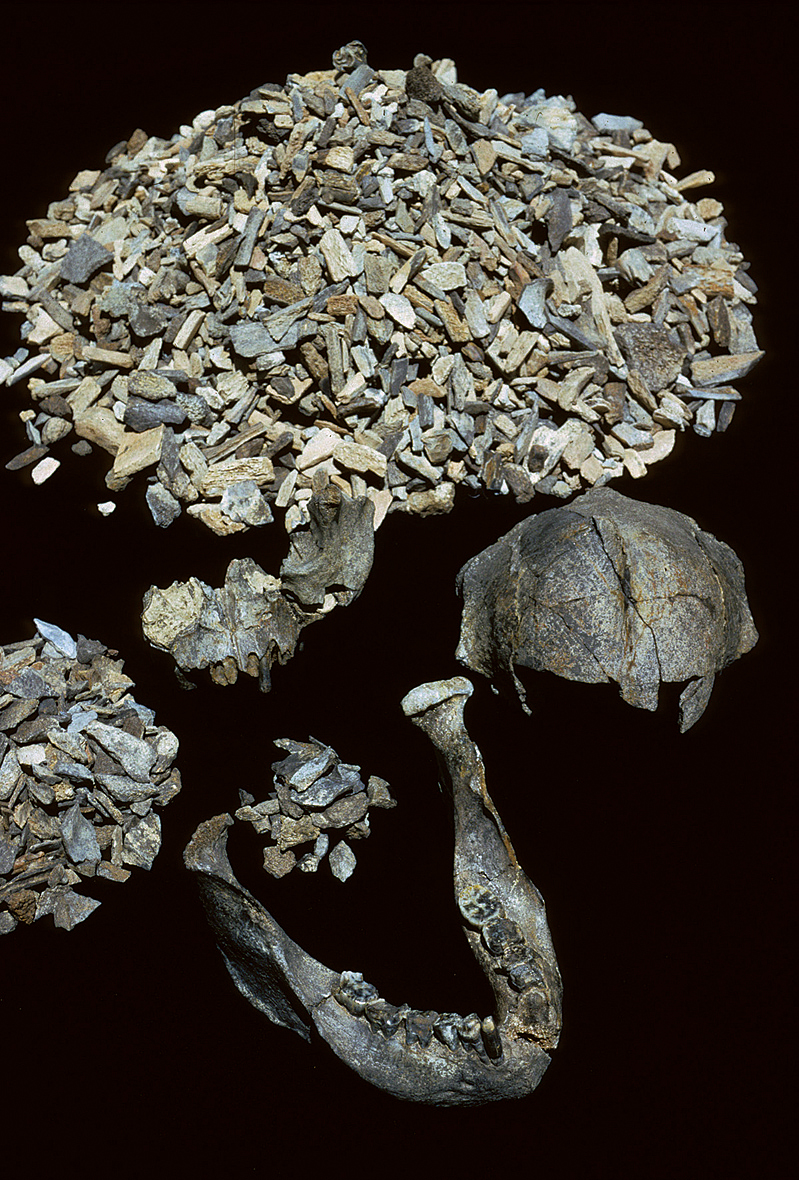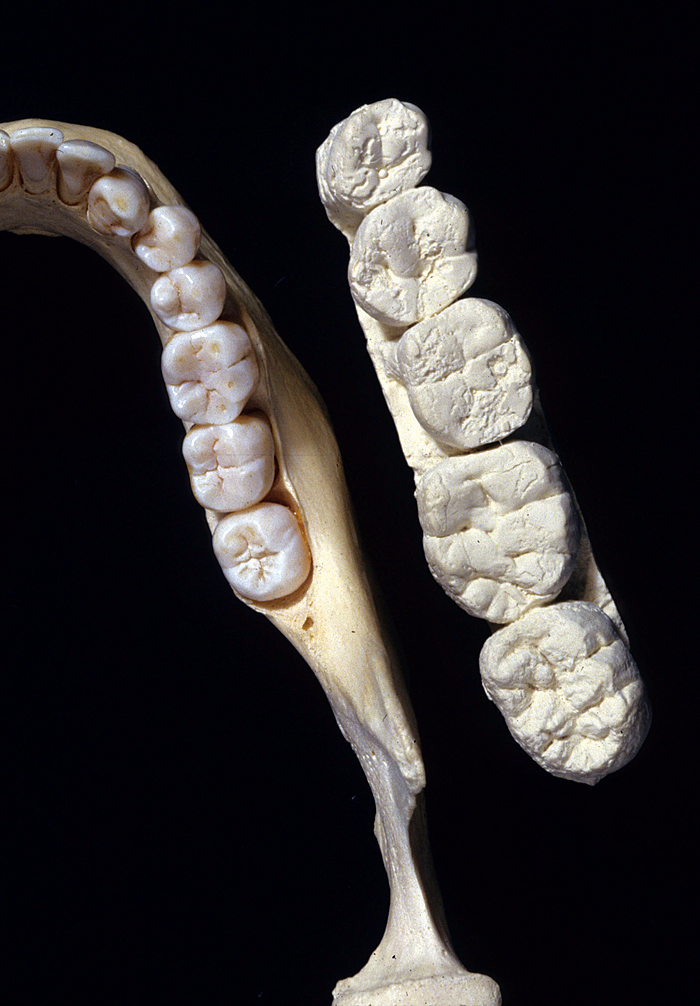B50
The Australopithecus boisei mandible
the largest humanoid jaw
The earliest Australopithecus is known from 4.2 Ma ago, followed by the well-known Au. afarensis to ~3.0 Ma. Compared to Ar. ramidus, early Australopithecus already exhibited obvious masticatory enhancement, most likely related to their increasing commitment to open-environment ranging and feeding. Au. boisei represents the extreme endpoint of such a specialization, with massive jaws and huge postcanine teeth. Since their body size was probably only modest, extreme megadonty is one of their characteristics. The dietary adaptation of Au. boisei have been investigated from a variety of methods, including functional morphology, biomechanical simulation, dental microwear, enamel thickness, and stable isotope analysis. Their morphological specialization appears to have enhanced from 2.3 to 1.3 Ma. Most likely, while Homo was expanding its niche, habitat use and ranging pattern of Au. boisei was becoming increasingly restricted. (Gen Suwa)
References
Suwa, G. et al. (1997) The first skull of Australopithecus boisei. Nature 389: 489-492.


